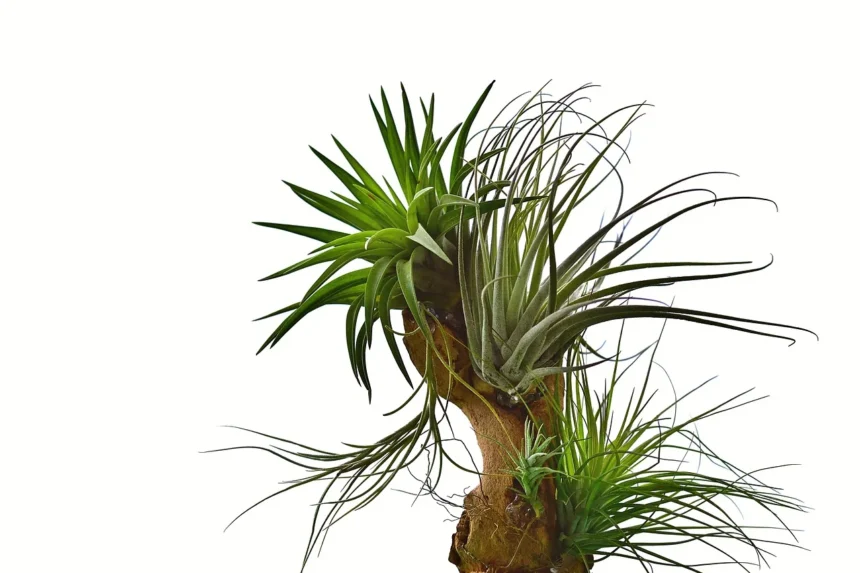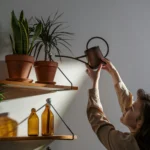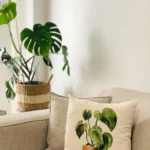Air plants, otherwise known as Tillandsias, are one of the botanical wonders of the world in that they simply don’t dance according to the rulebook regarding traditional plant care. These marvels of no soil open up their creative uses for indoor gardeners and design enthusiasts alike. Whether one be an experienced plant parent or a curious one, air plants can bring life into one’s space with hardly any effort. We are going to cover everything you might want to know, from the peculiar biology of air plants to creative display ideas, including expert care and maintenance tips. Let’s dive in and find out why air plants deserve a front-row seat in your house!

What Makes Air Plants Unique?
Air plants belong to the bromeliad family and are, by nature, an epiphyte; it grows on other surfaces besides soil. Native to the warm climates across the Americas, air plants depend on the leaves rather than the roots to capture their nutrients and water. These have adapted to living in various environments, making them quite adaptable, low maintenance, and ideal for growing indoors.
Key Features of Air Plants
- Soilless Cultivation: Air plants receive water and nutrients from the air via specially adapted leaves that feature trichomes.
- Diverse in Shapes and Sizes: From the curly leaves of Tillandsia xerographica to the feathery strands of Spanish moss, there’s something for every aesthetic out there.
- Low Maintenance: They require low watering and never need to be repotted, hence very suitable for busy plant enthusiasts.
- Creative Displays: Air plants do not require pots and therefore can be displayed in a number of creative ways.
How to Display Air Plants in Your Home
One of the most exciting things about air plants is the leeway to get creative with their display. Here are some innovative ideas to show off their sculptural beauty:
1. Lay Them On Decorative Surfaces
Air plants can simply be placed on materials like:
- Wood: Driftwood, grape wood, or ghost wood make for stunning natural backdrops.
- Rocks or Crystals: Pair air plants with polished stones or geodes for a touch of elegance.
- Sand and Shells: for a coastal or tropical atmosphere, respectively.
2. Attach Them to Vertical Displays
Add panache to your air plants by:
- Wrapping them with wire onto wall hangings.
- Using fishing line for the effect of floating.
- Glue them to corkboards, barks, or frames with adhesives like tilly tack.
3. Nestle Them Into Containers
Give your air plants cozy little homes by:
- Tucking them into glass terrariums or open jars.
- Put them in cholla wood, which has natural cavities perfect for a snug fit.
- Place them in baskets, vases, or even the most weird containers such as old books or light bulbs.
The Botany Behind Air Plants
Knowing the biology associated with air plants not only makes their care easier but also provides an even deeper appreciation of their uniqueness. Air plants’ leaves have trichomes, which are microscopic structures responsible for the absorption of water and nutrients in the air. These trichomes are also responsible for the silvery or velvet appearance of plants in species adapted to arid climates.
Types of Air Plants
Air plants are mainly classified as:
- Mesic Air Plants: Coming from humid climates, this variety has leaves that are smoother, greener in color, and prefer higher humidity.
- Xeric Air Plants: Adapted to survive in dry climates, these species represent more trichomes, giving it a silvery or feathery appearance.
Air Plant Care
While they are forgiving, a little attention goes a long way in keeping them healthy and thriving.
1. Light Requirements
Air plants love bright, indirect light. A sunny window with filtered sunlight will work just fine. For xeric varieties, a couple of hours of direct morning sunlight does them good
2. Watering Methods
- Misting: Perfect for everyday care, spray all sides of the plant completely.
- Dunking: Dunk the plant in running water or in a bowl, 2-4 times a week for a few seconds.
- Soaking: To refresh your air plant more thoroughly, it should be placed in water for 1-2 hours once every week.
3. Temperature and Humidity
Air plants love the temperature between 40°F – 90°F. Indoor environments with moderate humidity are ideal. For drier spots, misting more often helps keep things hydrated.
4. Fertilization
Feed your air plants once a month with a bromeliad or air plant fertilizer. Never over-fertilize your plants; this causes damage.
Common Issues and How to Solve Them
While air plants are resilient, they will sometimes show stress. Here’s how to handle some common issues:
1. Curled or Folding Leaves
This indicates underwatering. Water more frequently, or consider soaking.
2. Browning or Rotting
Too much water will cause plants to rot. Always make sure plants are dry after watering, and avoid high humidity.
3. Lack of Growth or Pups
Air plants produce “pups” after a bloom. If slow to grow, assess the light level and also try fertilizer.
The Artistic Side of Air Plants
Air plants will break the boundary between botany and art. Their versatility allows them to be used for original displays that reflect your personal style. Whether you prefer a minimalist aesthetic or a bohemian vibe, air plants can blend into every interior design theme.
DIY Air Plant Projects
- Create a living wall composition with several air plant species.
- You can also add air plants in wreaths or holiday ornaments.
- Use them as centerpieces on tables for events or dinner parties.
Why Air Plants Are the Perfect Indoor Companions
Air plants aren’t just beautiful but also serve some functional purposes. Here’s why they make excellent additions to your home:
- Air Purification:Like many plants, air plants improve indoor air quality.
- Stress Reduction: Plant care reduces stress and improves your mood.
- Conversation Starters: Their uniqueness in appearance and care intrigues people.
Conclusion: Unleash Your Creativity with Air Plants
Air plants are not just a houseplant but a work of living art, welcoming creativity and curiosity into your home. Soil-free by nature, they require low maintenance, which makes them sculpturally interesting and offers endless possibilities regarding customization and design. Start your air plant journey today and turn your living space into a botanical haven.








